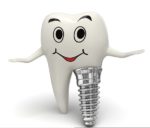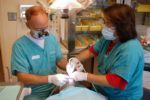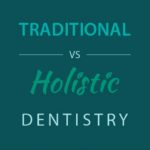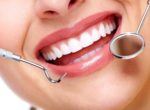Table of Contents
The use of lasers in general and specialized dentistry has been around for decades. With dental technology advancing, new practices and new technology are in the process of being adopted into general and specialized procedures. This advance of dental technologies is changing the way dentists and hygienists treat patients. Here are 3 of the new and upcoming laser dentistry procedures and tools that could be used by multiple dentists in the near future.
Tooth Regeneration
A recent study by a research team at Harvard University School of Dental Medicine used laser dentistry to stimulate the stem cells of a rat’s broken tooth aspiring that it would grow back. The experimentation proved successful as the rat’s tooth slowly regenerated over the course of 12 weeks. The researchers then tested the same technique on a human tooth, and this experiment was also successful as a layer of dentin was produced. Here is an image to visualize:
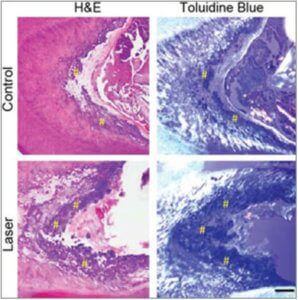
Figure 1 Here are the results of the x-ray imaging from the experiment (source from WYSS Institute at Harvard). 2 different stains were used to display the newly acquired tertiary dentin. The yellow hashtags (#) represent the newly formed dentin on the rat’s toot
This technique is expected to branch off beyond dental use into the regeneration of other parts of the body like muscle and bone tissue.
Prevention of Third Molar Development Using Lasers
In contrast to using lasers to regenerate broken teeth, a recent study has shown that at a young age, the use of a 20-watt diode laser could stop the development of third molars (also known as wisdom teeth). Throughout the experiment, this procedure is shown to work 80% of the time with minimum side effects. This whole process would take place over the course of 6-7 weeks. During the process, a 20-watt diode laser is placed overtop of the third molars’ tooth buds when they are forming underneath the oral mucosa. After this was done, the 2 intra-oral sites that received the oral treatment did not develop the third molars.
Here is an image to display for the treatment:
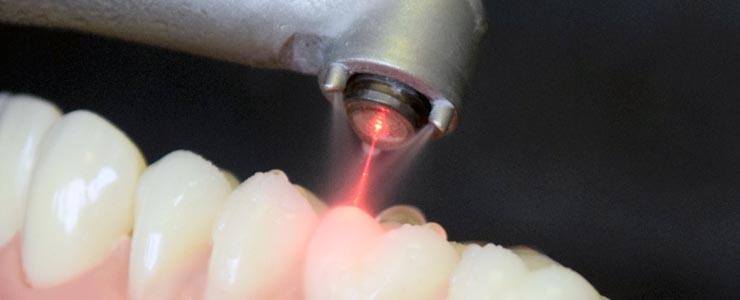
Figure 2 Here is a simple image of the process that takes place when using lasers to stop the development of a tooth. This is a very painless process, a much better alternative to the use of drills and needles.
The Use of CO2 Dental Lasers
Very recently, the Solea CO2 laser developed by Convergent Dental has been approved by the FDA for the use on hard and soft oral tissue. This is the first CO2 laser to be approved for any kind of dental use in the United States and the world. Convergent Dental has said that 95% of patients do not need anesthesia, and virtually no patients experience oral bleeding, a rather high percentage for a new piece of dental tech that is the first of its kind to be released. This original model of the CO2 laser has expanded across the dental market quickly, and in not too long from now, most dentists will be using a Solea Laser in their treatments.
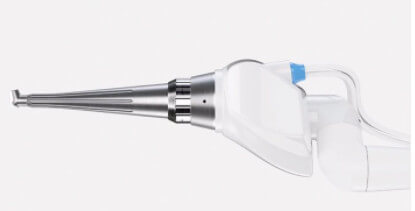
Figure 3 The First Model of Convergent Dental’s Solea CO2 Laser (Source from Covergent Dental).
CO2 Lasers have proven to provide an easier, quicker and more effective way of treating harmed or irritated teeth than the past method of using drills and dentures. This opens way for the view on going to the dentist to change. The Solea CO2 dental laser has also won the “Best of what’s new award” on www.dentistryiq.com. This instrument is looked on as an instrument that could change the views on going to the dentist.
What is a Dental Laser?
A dental laser is piece of dental technology that generated a beam of concentrated light. This beam will help make it easier for dentists to perform tasks on your mouth.
What Can Laser Dentistry be Used For?
 There is a very wide range of uses for lasers in dentistry. Laser dentistry can be used for:
There is a very wide range of uses for lasers in dentistry. Laser dentistry can be used for:
- Fillings
- Gum Treatments
- Oral Surgeries of the Uclers, Biopsies, Tongue Ties, Wisdom Teeth, Broken Teeth
- Teeth Whitening
- Tooth Decay
Is Laser Dentistry Safe?
The use of lasers in dentistry is completely safe. Every procedure that will be performed on you must be approved by the appropriate regulatory body.
How Long Have Lasers Been Used in Dentistry?
Lasers have been part of the dental practice since the 1960s. However, this does not mean that the procedure is outdated. Laser dentistry is the most quickly developing practice in dentistry as of now.
What Are the Downsides of Laser Dentistry?
- Lasers cannot be used on teeth with fillings already in place
- Anesthesia could still be necessary (even though very unlikely)
- Can be an expensive procedure
- Dental lasers do not always eliminate the need for drills or needles
- Lasers cannot yet be used in common procedures
You can read more of Rhys Dominguez articles at his Best Dentists in St. Catharines website.


